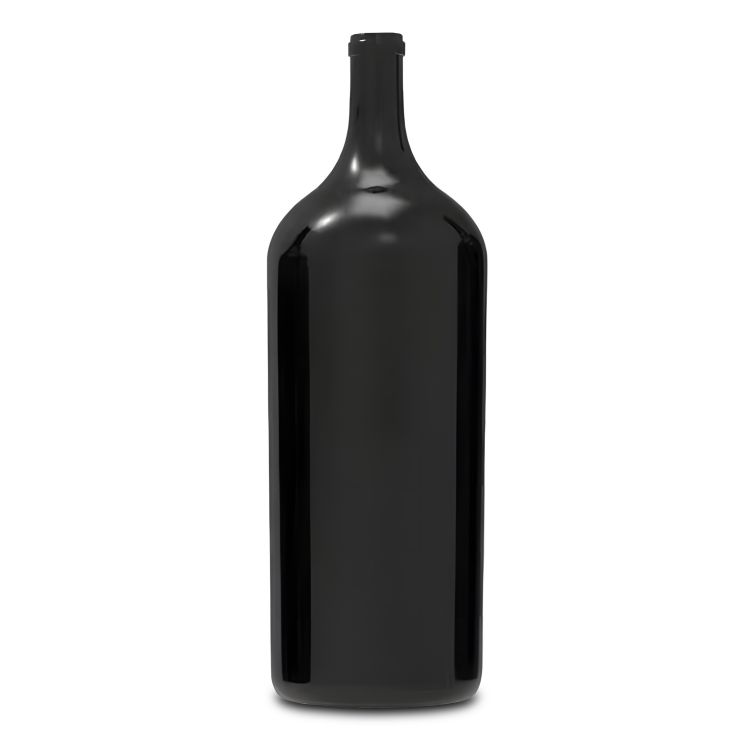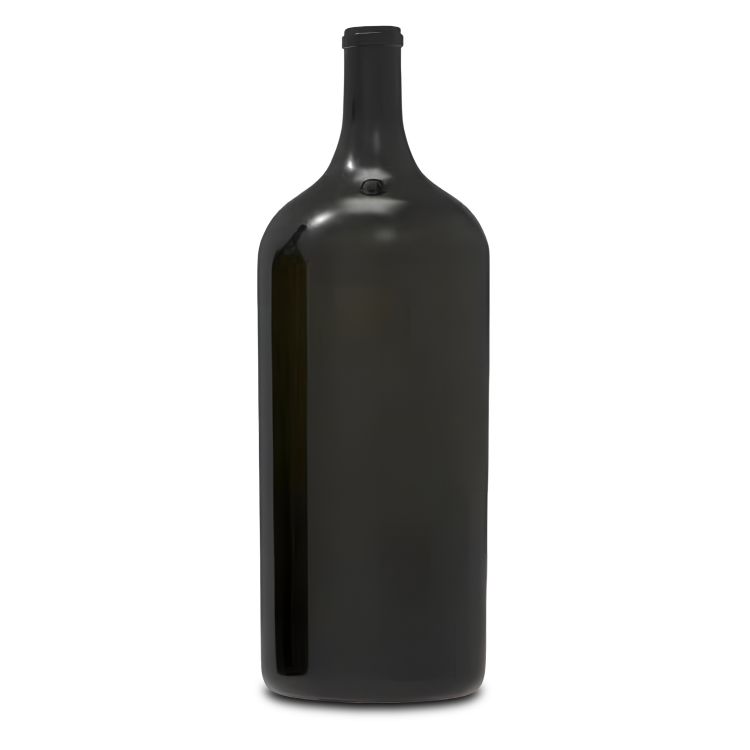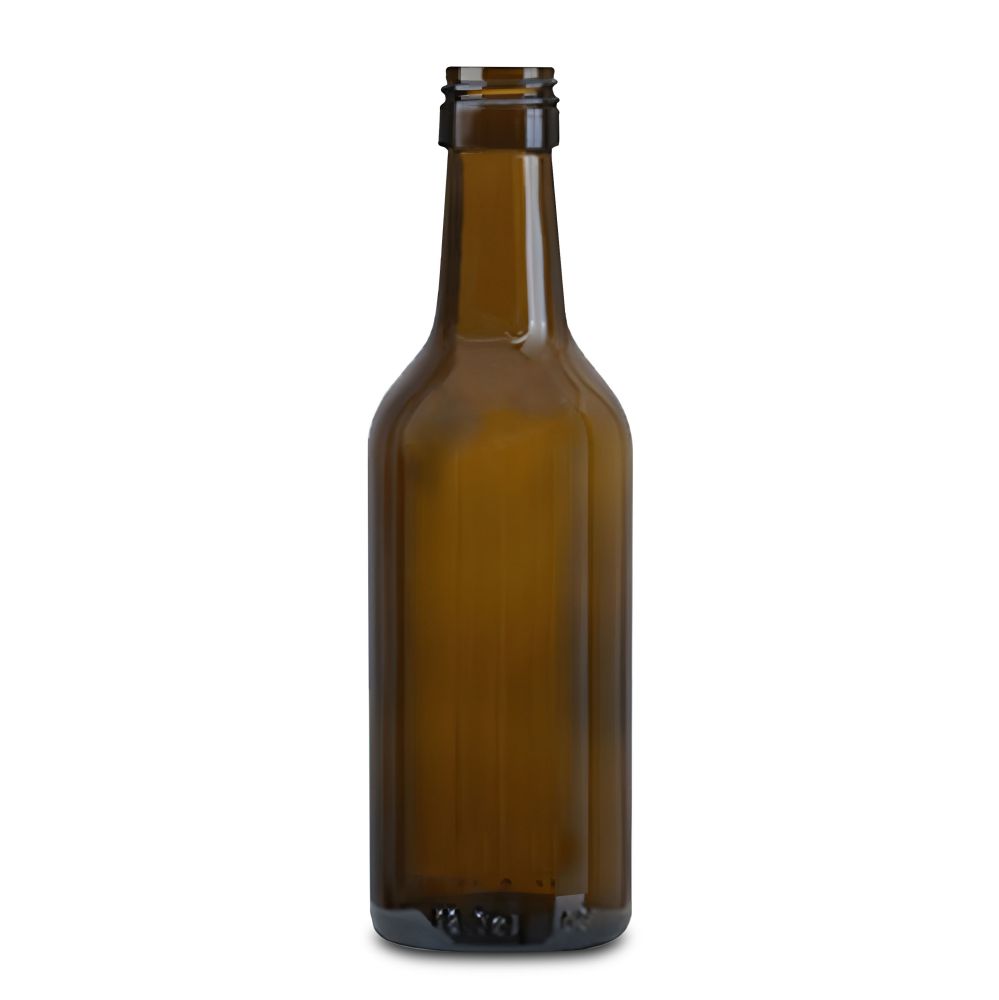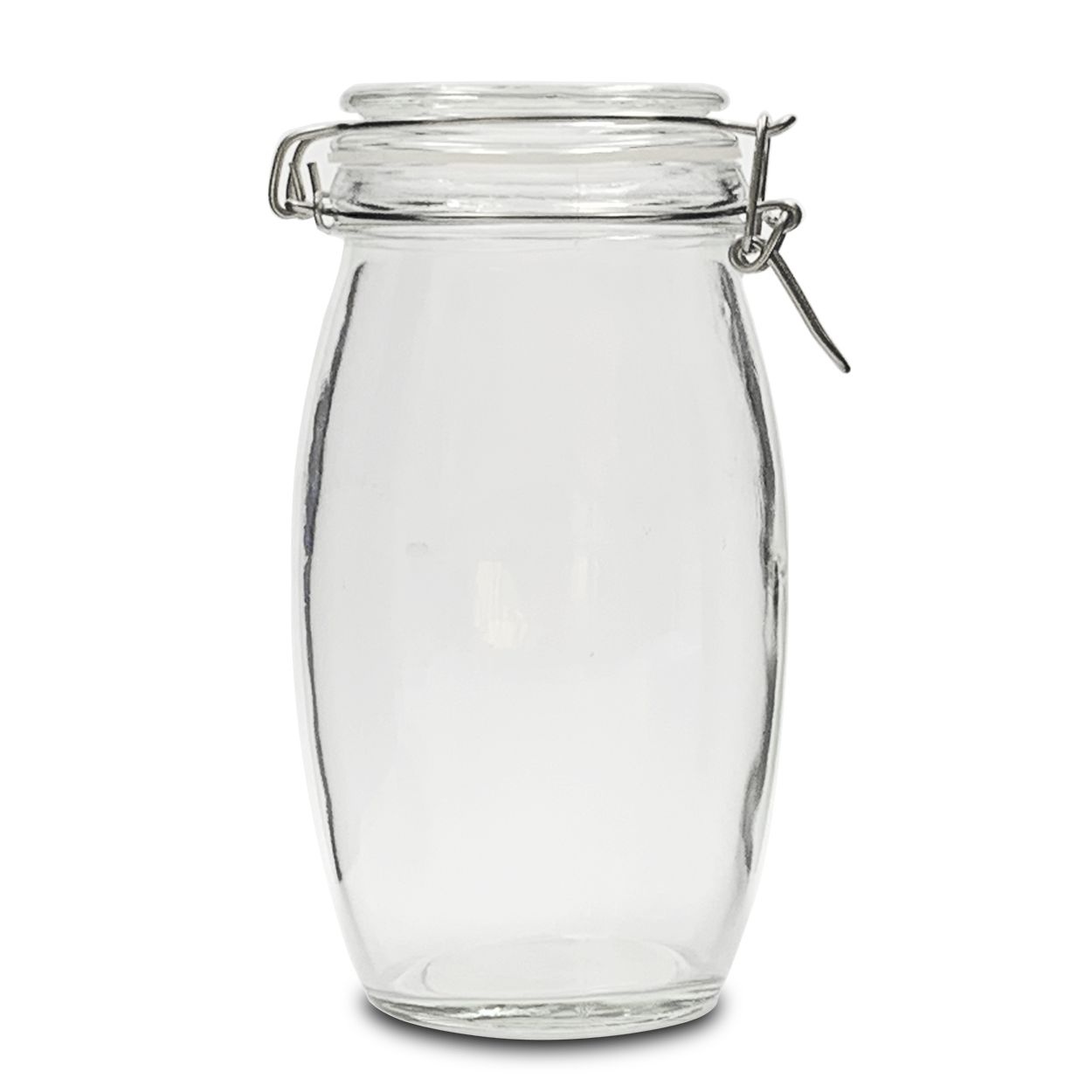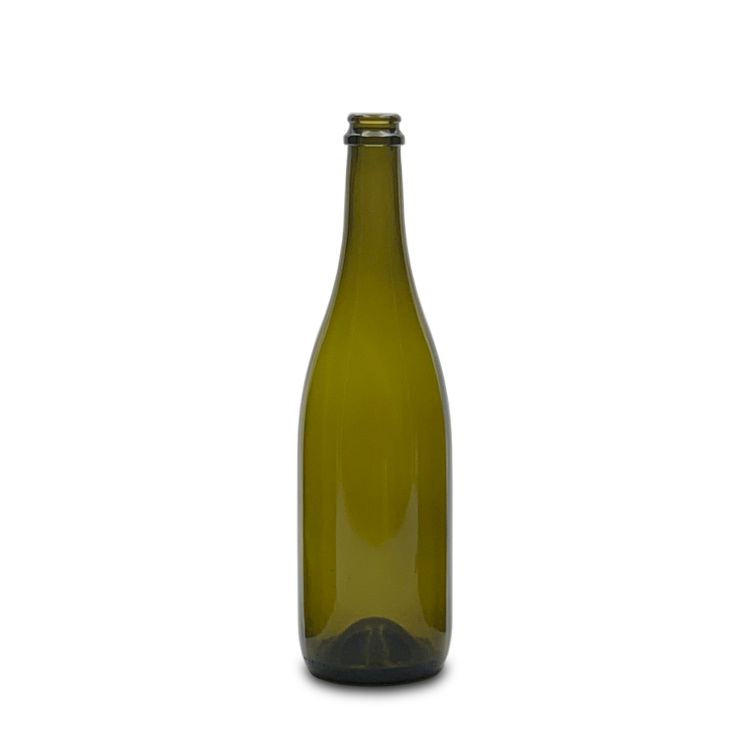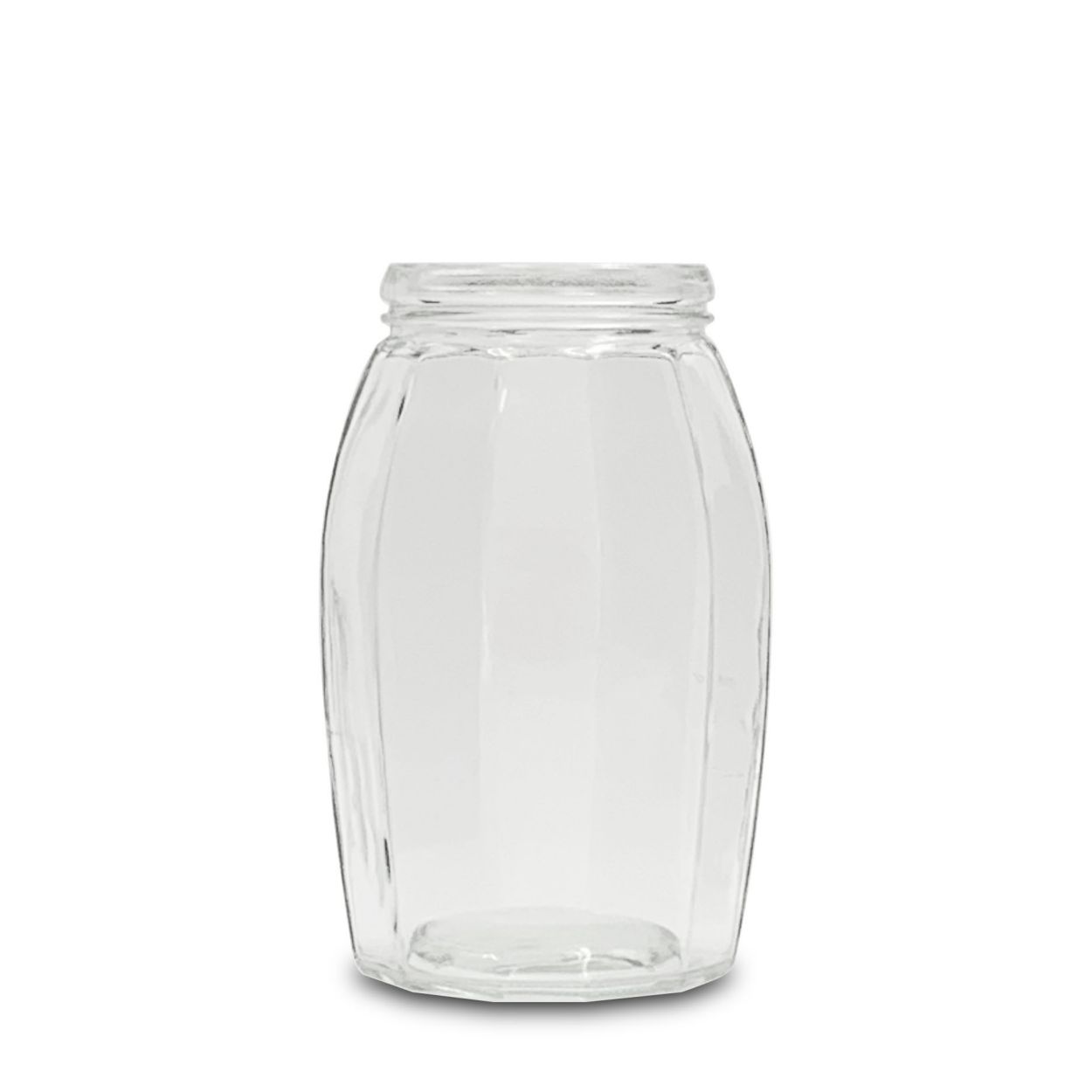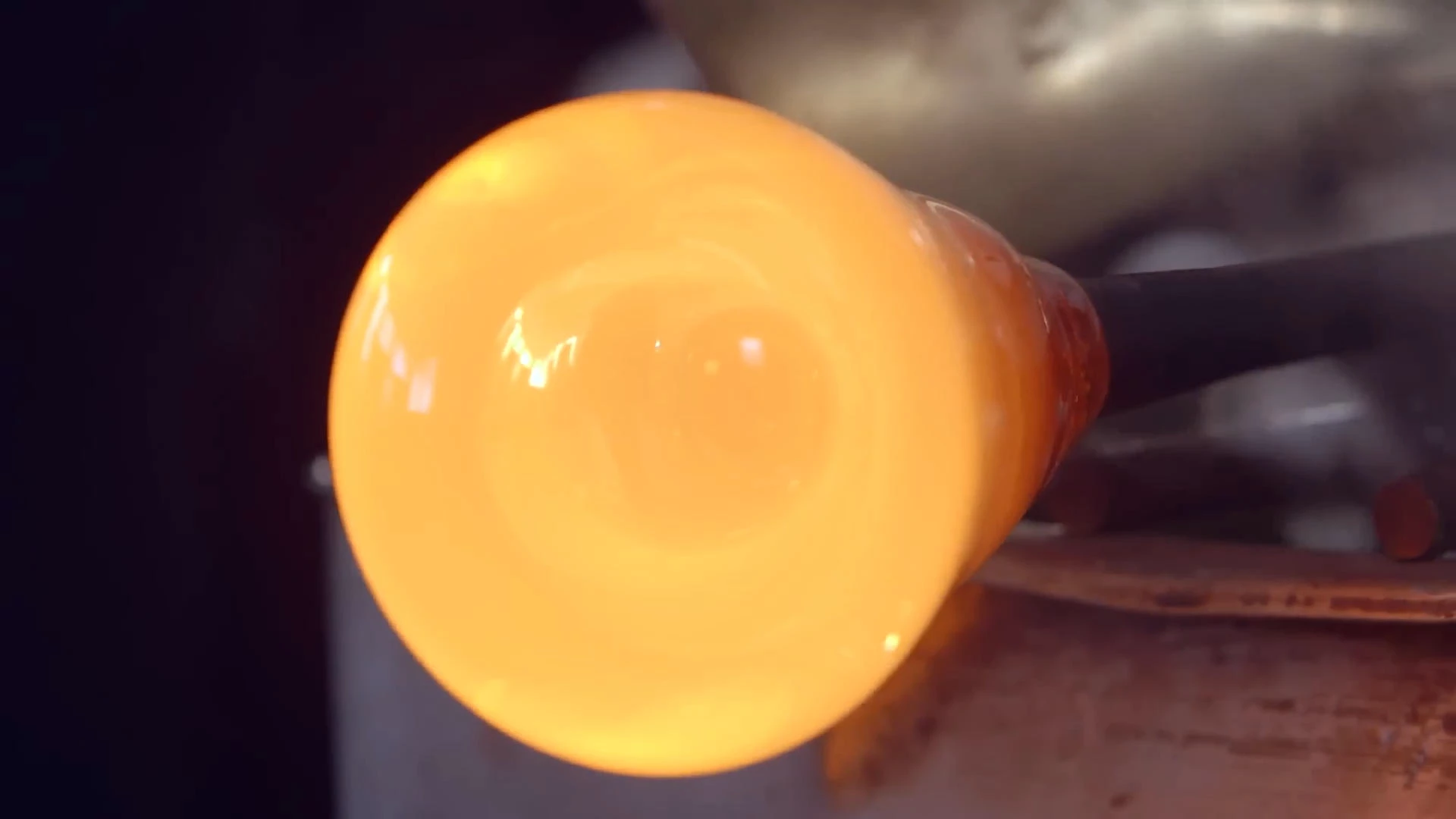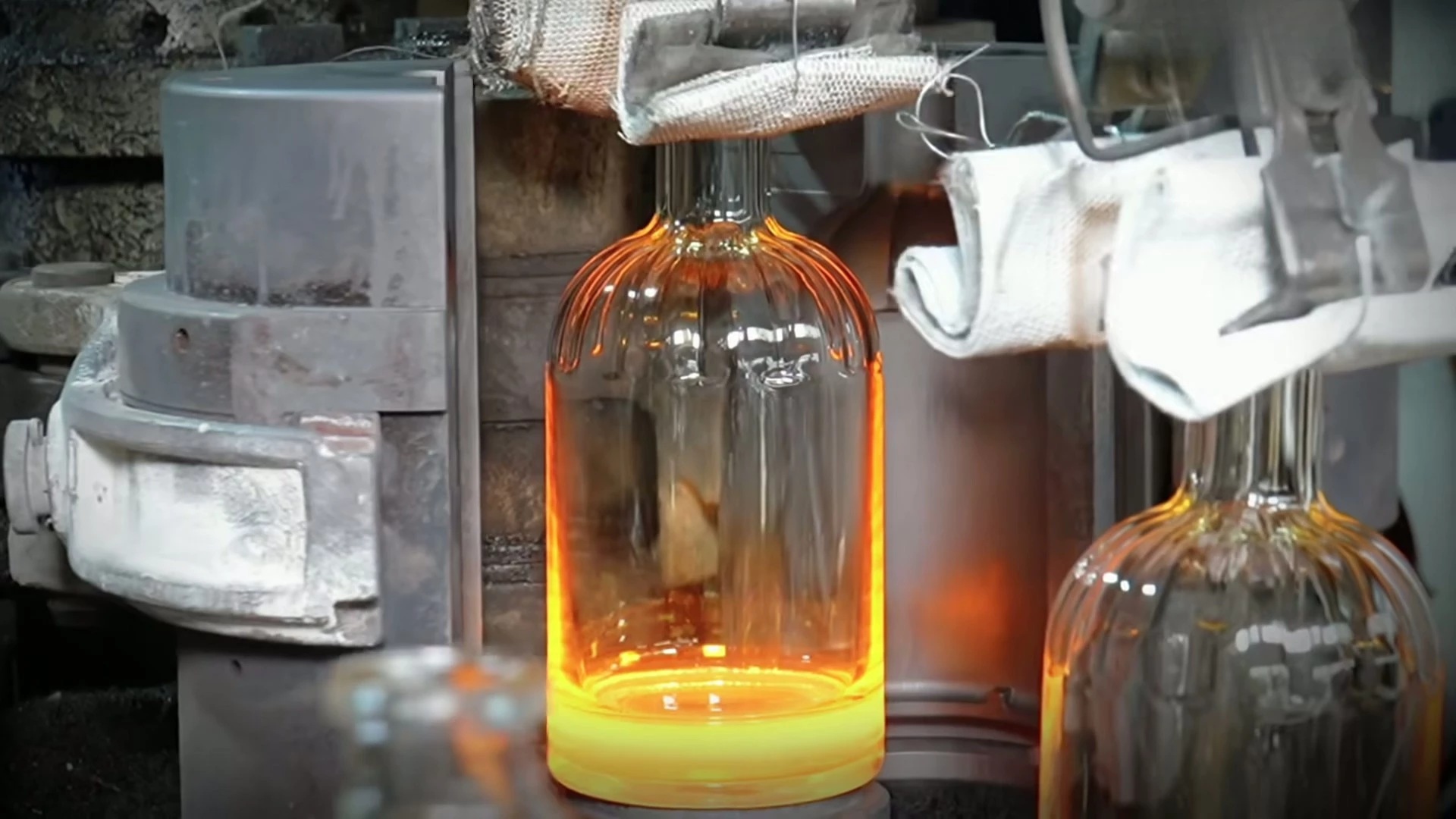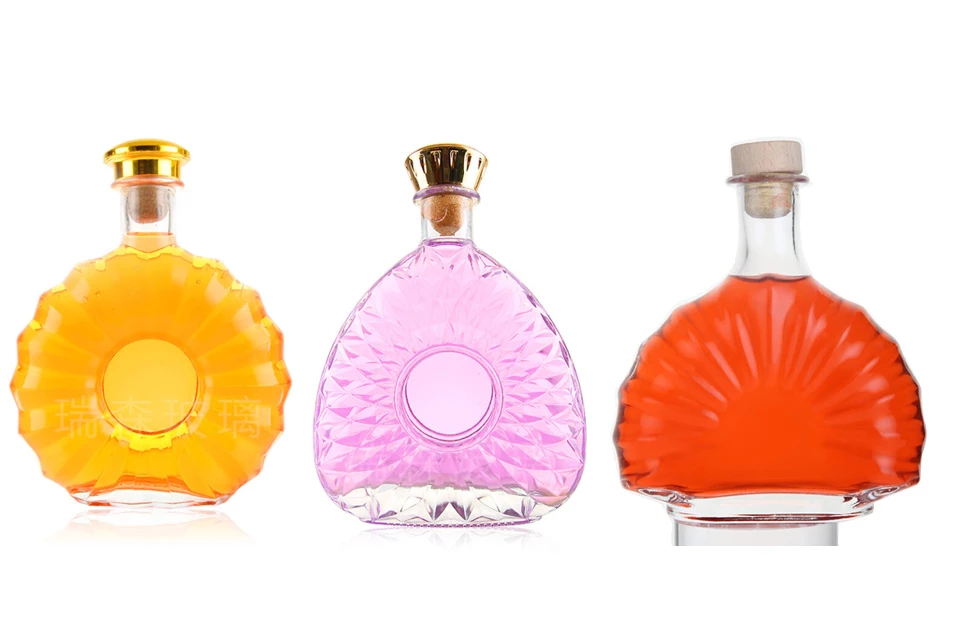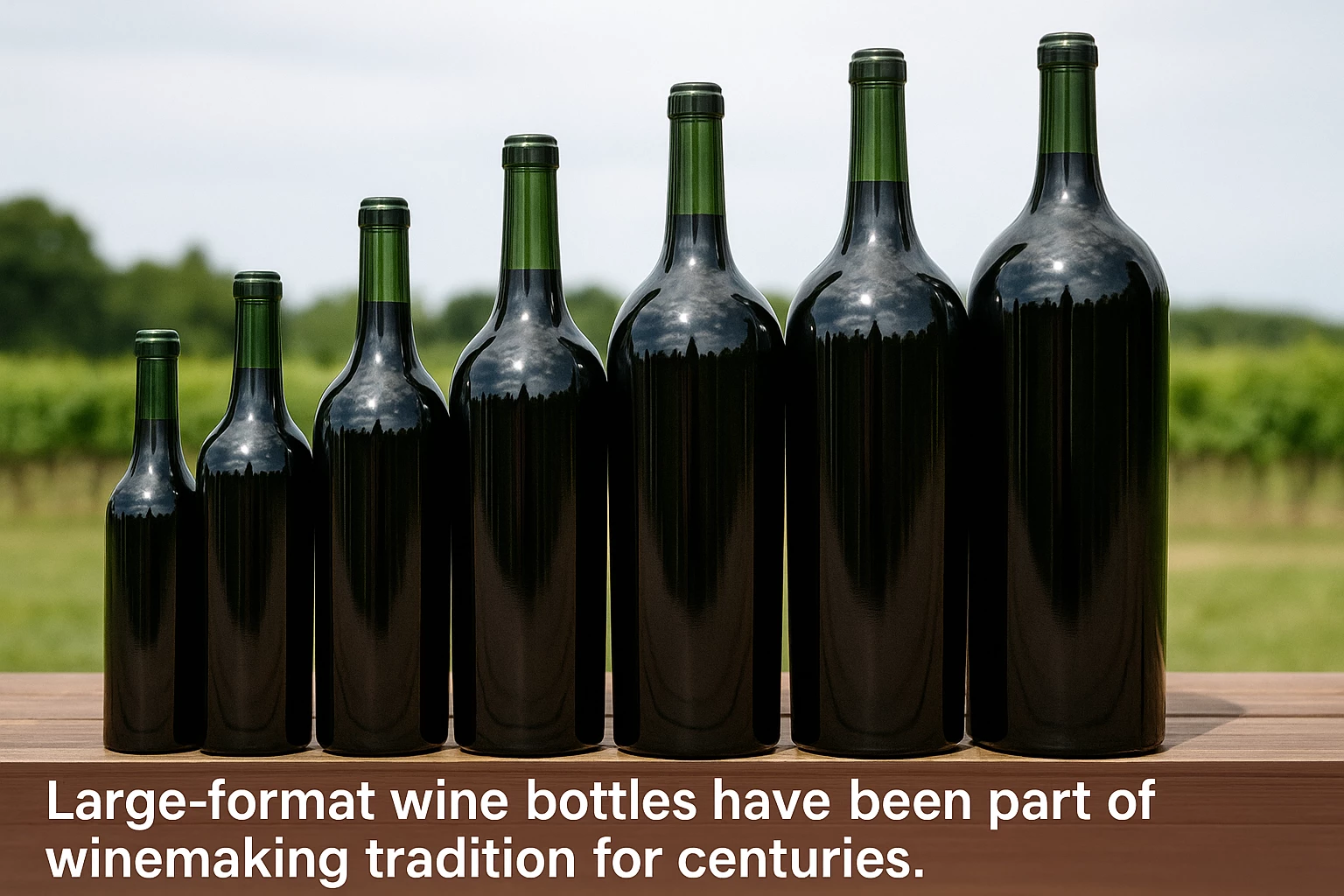
Large-format wine bottles have been part of winemaking tradition for centuries, serving both functional and ceremonial roles. From 1.5L Magnums to 30L Melchizedek bottles, these oversized containers are used for premium collections, aging programs, winery showcases, and limited-edition releases.
While consumers often see large bottles as impressive display items, wineries and bottling engineers understand that these formats require specific production methods, technical considerations, and packaging solutions.
This guide covers everything wineries, distributors, and designers need to know about large-format wine bottles—from size names and dimensions to manufacturing processes, aging performance, filling line requirements, and export packaging.
What Are Large-Format Wine Bottles?
In the wine industry, “large format” refers to any bottle larger than 1.5L.
These bottles follow traditional European naming conventions—Magnum, Jeroboam, Imperial, Salmanazar, Balthazar, Nebuchadnezzar, and beyond.
While standard 750ml bottles dominate everyday production, large formats serve specialized roles:
- Showcase and marketing displays
- Premium cellar-aging programs
- Gifts and ceremonial releases
- Collector editions
- Limited-run winery projects
Because of their size, they provide superior thermal stability during aging and offer dramatic visual impact in tasting rooms and retail environments.

Why Large-Format Bottles Are Used
Large bottles carry several advantages in the wine industry:
1. Improved Aging Potential
Large-format bottles have a lower oxygen-to-wine ratio, meaning wine ages more slowly and evenly.
This makes them ideal for long-term cellaring of Bordeaux blends, Cabernet Sauvignon, Syrah, and other age-worthy varieties.
Slow aging leads to:
- Finer tannin integration
- Improved aroma development
- Better long-term color stability
- Reduced bottle variation
2. Strong Visual Impact for Premium Branding
A 3L Jeroboam or 6L Imperial immediately stands out on a shelf or tasting room display.
Luxury wineries often use large formats to strengthen their brand identity and create premium gift options.
3. Ideal for Special Events and Ceremonies
Because large bottles pour many glasses at once, they’re used for:
- Winery anniversaries
- Weddings
- VIP dinners
- Public relations launches
- Collector showcases
4. Higher Perceived Value
Large-format packaging increases perceived value and creates exclusivity.
Even the empty glass bottle—especially 9L and above—can become a keepsake or showroom item.
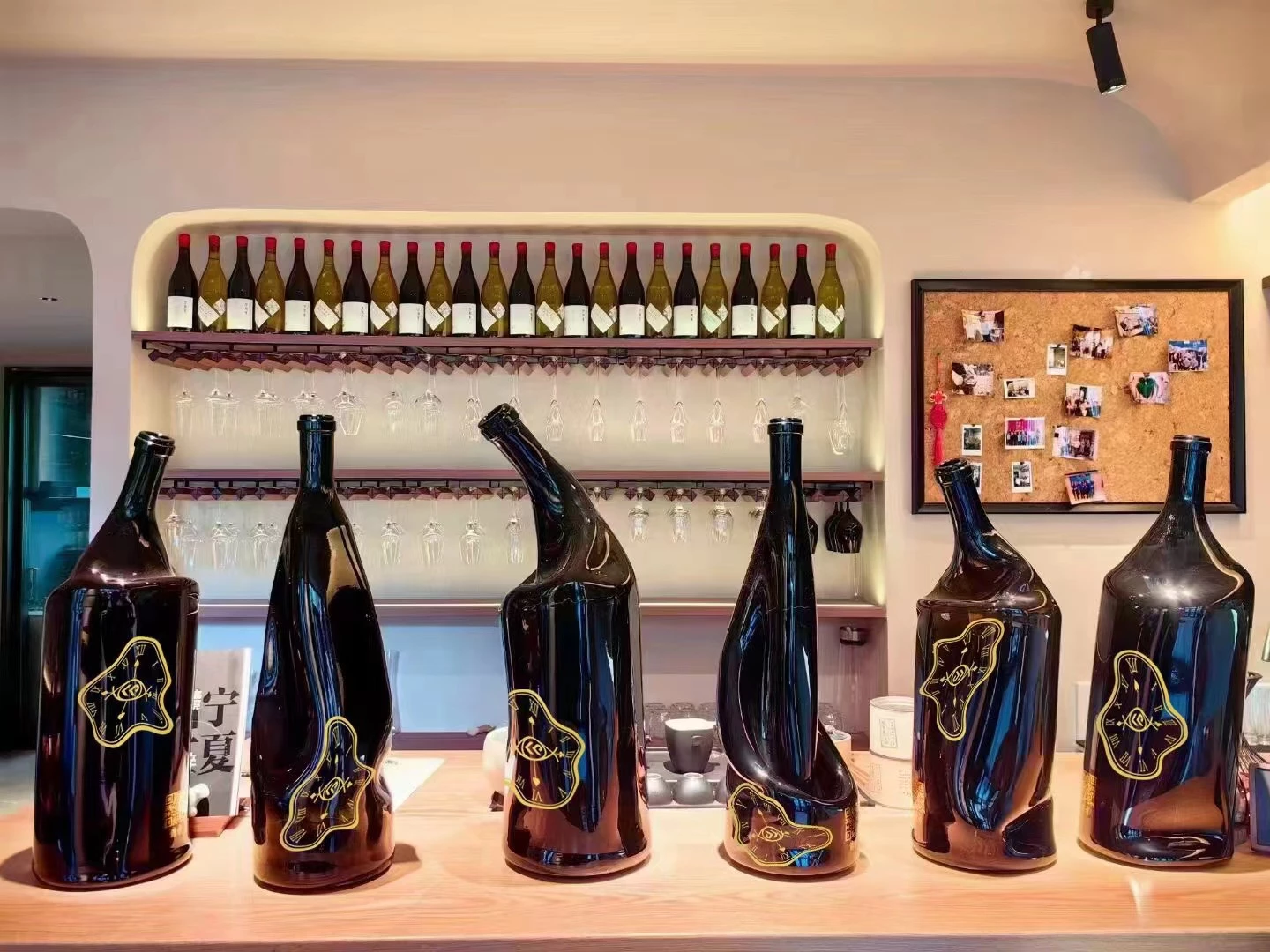
Large-Format Bottle Sizes (1.5L to 30L)
Below is the complete naming system for Bordeaux-style large wines.
The names originate from biblical kings and historical rulers.
1.5L – Magnum
The Magnum is the gateway into large formats.
It offers:
- Double the volume of a 750ml
- Thicker walls and reinforced heel
- Enhanced structure for shipping
- Ideal aging characteristics
Magnums run smoothly on semi-automatic corking lines and are widely used for:
- Premium red wines
- Limited editions
- Holiday gift sets
3L – Jeroboam
The Jeroboam holds four bottles’ worth of wine.
Its size is popular for collector sets and premium releases.
Manufacturing requires stricter mold symmetry control to prevent body lean.
Used for:
- Reserve reds
- Anniversary editions
- Aging programs
6L – Imperial
The Imperial is one of the most iconic large formats.
With capacity equal to eight standard bottles, it is engineered with:
- Increased wall thickness
- Deepened punt
- Additional shoulder strength
This bottle often becomes a centerpiece in a winery tasting room.
9L – Salmanazar
At 12 bottles’ worth of wine, Salmanazar bottles are tall and visually striking.
They demand:
- High gob weight precision
- Extended annealing time
- Thick protective export cartons
Salmanazar bottles are ideal for major events and large gatherings.
12L – Balthazar
The Balthazar is typically produced for luxury-brand collaborations and exclusive estate releases.
The bottle’s height and weight require careful handling and customized packaging solutions such as wooden crates.
15L – Nebuchadnezzar
Often used in high-end marketing installations, the Nebuchadnezzar holds 20 standard bottles.
Manufacturing challenges include ensuring:
- Base flatness
- Neck alignment
- Stress-free annealing
Nebuchadnezzars usually ship on individual pallets.
18L – Melchior
A rare production piece often made to order.
The long, narrow body requires precise temperature control during forming to avoid deformation.
Used for:
- Private-label prestige lines
- Promotional events
- Collectors
24L – Special Large Format
This size is not standardized globally but is sometimes produced for wine exhibitions or VIP events.
Because of its extreme mass, glass distribution must be heavily reinforced in the heel and lower body.
30L – Melchizedek (or “Midas”)
The 30L Melchizedek is the pinnacle of large-format bottles.
With the volume equivalent of 40 standard bottles, it is:
- Rarely mass-produced
- Primarily used for display
- Manufactured under strict mold and cooling controls
It often requires:
- Custom wooden crates
- Deeper punts
- Thickened shoulders
- Individual palletizing
How Large-Format Wine Bottles Are Manufactured
While standard 750ml wine bottles follow fixed automation, large formats require special handling.
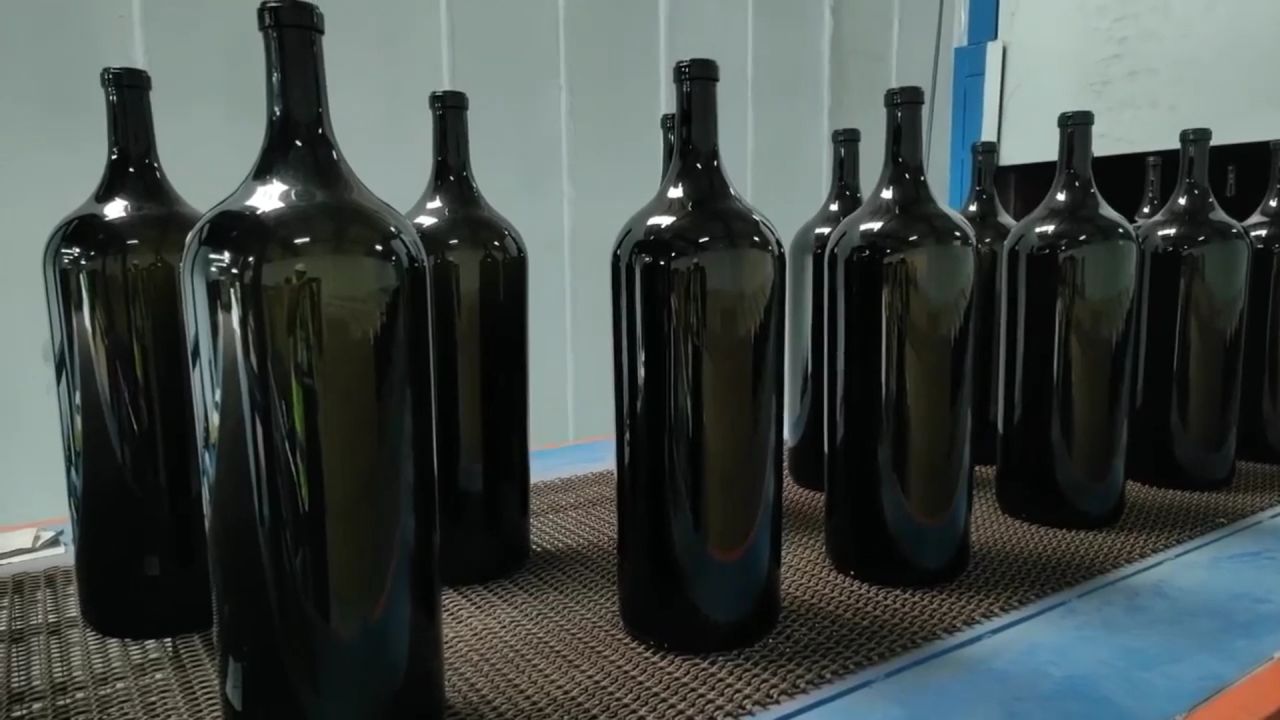
1. Gob Weight Control
Larger bottles require heavy gobs—sometimes 3–10× that of standard bottles.
This requires:
- Slow, controlled gob drop
- Reinforced delivery system
- Stable temperature consistency
2. Blank Mold & Blow Mold Adjustments
Large molds need:
- Thicker mold walls
- Longer cooling cycles
- Higher-strength alloys
- Slow forming speed
Each mold cavity must withstand high thermal loads.
3. Wall Thickness Distribution
Critical areas include:
- Heel (impact zone)
- Shoulder curvature
- Neck finish
- Punt depth
Glass engineers tune the blow-and-blow process to ensure no thin areas that might compromise strength.
4. Annealing Process
Large formats are extremely sensitive to internal stresses.
They require:
- Longer time in the annealing lehr
- Gradual temperature slope
- Symmetric cooling
Without precise annealing, bottles risk stress fractures during filling or export.
Handling and Filling Considerations
Large formats cannot simply be run on standard high-speed lines.
1. Filling Method
Most wineries use:
- Semi-automatic fillers
- Low-vibration conveyors
- Custom cradles or supports
A 30L bottle may need two operators.
2. Corking & Capping
Large formats typically use:
- Larger cork diameters
- Heavy-duty corking heads
- Manual or pneumatic corkers
Neck finish tolerances are more important because of higher cork friction.
3. Labeling
Curved surfaces and tall bodies require:
- Longer label plates
- Stronger adhesives
- Manual application for sizes above 15L
Packaging & Exporting Large-Format Bottles
Large-format bottles present unique shipping challenges.
1. Individual Packaging
Most formats above 6L require:
- Single-bottle heavy-duty cartons
- Die-cut partitions
- Reinforced corners
- Pallet strapping
2. Wooden Crates
Preferred for bottles above 12L due to:
- Structural protection
- Reduced breakage rates
- Improved display value
3. Palletizing
Key considerations:
- Center-of-gravity balancing
- Vibration resistance
- Top-load protection
- Edge boards and pallet skirts
For 30L bottles, single-unit pallets are recommended.
Large-Format Bottles for Branding & Marketing
Beyond functional use, large formats are powerful branding tools:
- Enhance tasting-room atmosphere
- Create memorable photography
- Used in PR events
- Popular in holiday gift campaigns
Many wineries order one-off 9L, 12L, or 15L bottles solely for display.
When Should Wineries Use Large Formats?
Use large formats when:
- Launching premium or collector wines
- Creating cellar-aged products
- Planning a marketing display
- Releasing a special anniversary edition
- Targeting luxury gift markets
For wineries seeking differentiation, large formats are both a tradition and a modern branding strategy.
Questions & Answers
1. What is a large-format wine bottle?
A large-format wine bottle refers to any wine bottle larger than 1.5L, including Magnum, Jeroboam, Imperial, Salmanazar, Balthazar, Nebuchadnezzar, and larger sizes up to 30L.
2. Why do wineries use large-format bottles?
Large-format bottles age more slowly and evenly due to their lower oxygen-to-wine ratio. They are also used for premium releases, collector editions, marketing displays, and ceremonial events.
3. What are the most common large-format wine bottle sizes?
Common large-format wine bottle sizes include 1.5L (Magnum), 3L (Jeroboam), 6L (Imperial), 9L (Salmanazar), 12L (Balthazar), 15L (Nebuchadnezzar), 18L (Melchior), 24L, and 30L (Melchizedek).
4. How are large-format wine bottles packaged for export?
Due to their size and weight, large-format bottles are usually packed in reinforced cartons or wooden crates, with individual palletizing for bottles larger than 12L.
Didn’t find the answer you are looking for? Contact our support
Author: Long Chen
Long Chen has been working in the glass packaging industry for more than 20 years.
He specializes in furnace operation, forming process optimization, mold design, and production troubleshooting for export-grade glass containers.
He has participated in technical projects serving clients in the U.S., Europe, Southeast Asia, and the Middle East, including cooperation on bottle development and manufacturing adjustments for companies such as InnovativeSourcing and Country Malt Group.
Related Reading
→Different Wine Bottle Shapes: Design Purpose, Historical Evolution and Wholesale Selection Guide








